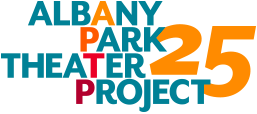The collection of languages spoken by the young performers in “Saffron” – the new show by the nationally recognized Albany Park Theater Project set to debut this weekend as part of the Children’s Humanities Festival – could easily keep the translation department of the United Nations busy.
Along with English and some high school French, the youthful actors’ native tongues include Spanish, Armenian, Romanian, Vietnamese and Tagalog (Philippine). Add to this the languages spoken by those kids who will not appear onstage but have contributed to the show’s development, and the list balloons.
This should not be entirely surprising: Albany Park, where David Feiner and his wife, Laura Wiley, founded their teen theater company eight years ago, is what sociologists might term “a port-of-entry neighborhood.” And this cultural stew of established and newly arrived immigrants has proved to be a rich source of stories for the stage, just as the talented young people, who range in age from 14 to 21 and are drawn from Roosevelt, Von Steuben, Lane Tech and other city schools, have found sustenance in the multidisciplinary approach of the theater.
In the case of “Saffron,” a show that has been in the works for about 18 months and has involved the participation of 30 teenagers and 15 adult artists, it all began in Noon-O-Kabob, a little storefront restaurant at the corner of Leland and Kedzie that was once a standard Subway but was transformed into a lively family business.
The world of that restaurant became the inspiration for a play that delves into the lives and histories of quite a cultural cross-section. There’s the patriarch and owner, Kamyar, a charismatic storyteller and philosopher who fled the Islamic Revolution in Iran in 1979. There’s an undocumented Mexican immigrant who explains his hardships crossing the border. And, at the center of the story, there is a dying Bolivian patriarch who was once a fervent socialist revolutionary, and who is now sharing a final family meal.
These stories were collected by the young actors and their mentors who, in the tradition of oral historian Studs Terkel, sat their subjects down in front of a tape recorder and asked them to talk about their life experiences. The material was then reworked and embroidered into theatrical form and laced with music and dance.
“For quite some time we’ve used Noon-O-Kabob as an alternate base of operations when we’re not working at out home, the Chicago Park District’s Eugene Field Cultural Center,” said Wiley. “There is something magical about the environment – a beautiful mix of people of every race, class, ethnic group. Cops eat there. So do Muslim women in headscarves. There are children and the elderly. It’s just such a festive atmosphere.”
Hedy Weiss, Chicago Sun-Times
 Menu
Menu